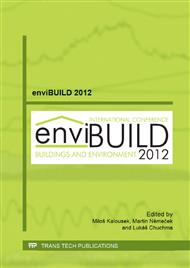[1]
Standards Australia, 2002. The Australian Earth Building Handbook. Sydney.
Google Scholar
[2]
Minke, Gernot: Building with Earth: Design and Technology of a Sustainable Architecture, Berlin, In: Birkhäuser Architecture; 2nd, rev. ed. edition (January 16, 2009) ISBN-10: 37-64-38992-3
Google Scholar
[3]
Houben, H. and Guillaud H., 1994, Earth Construction, A comprehensive Guide. Intermediate Technology Publications, London, UK. (pdf)
Google Scholar
[4]
Craterre, 1990, Raw Earth Architecture, Renaissance of Architecture in France, CRATerre, Villefontaine, France.
Google Scholar
[5]
Unesco Un-habitat found at the website: http://www.unhabitat.org/downloads/docs/3629_74602_Compressed.pdf
Google Scholar
[6]
Development alternatives 1998 and Prof. B. V. Venkatarama Reddy Department of Civil Engineering, Indian Institute of Science Bangalore – 560 012
Google Scholar
[7]
Katunský D.[et al.] Centre for excellent research of progressive building constructions and indoor technology at the Building and Environmental Institute. - 2011. - 1 In: Doctoral Seminar 2011 Building and Environmental Institute: 3. year : Košice, TU, 2011 S. 8-12. - ISBN 978-80-553-0622-3
Google Scholar
[8]
Williamson T. J. Assessing the effectiveness for thermal mass in the building envelope. In: Proceedings of Building Simulation 2011: 12th Conference of International Building Performance Simulation Association, Sydney, 14-16 November.
Google Scholar


